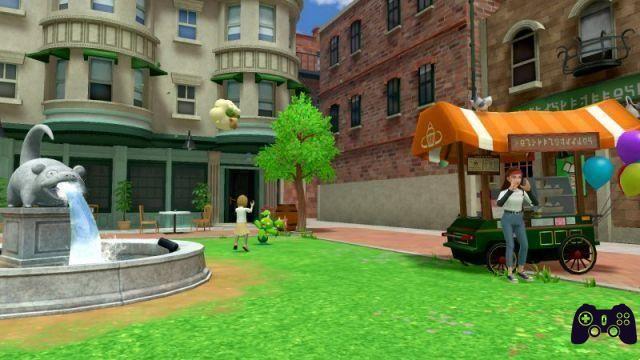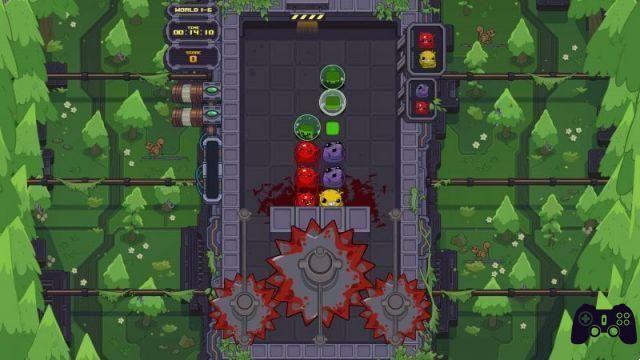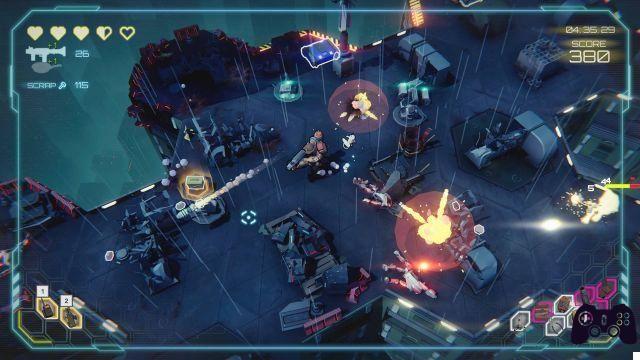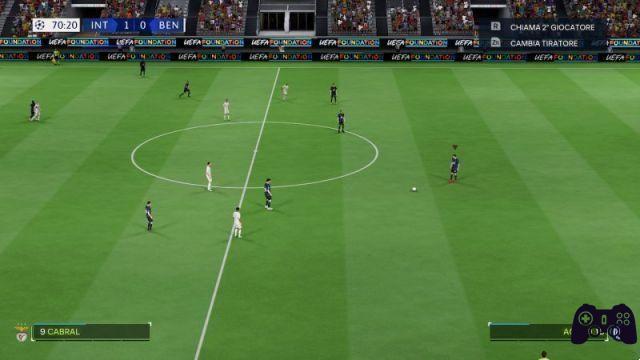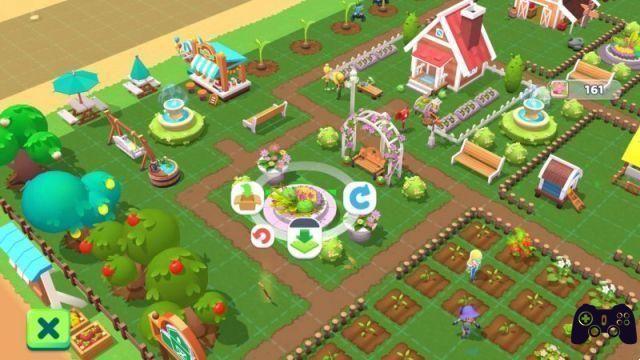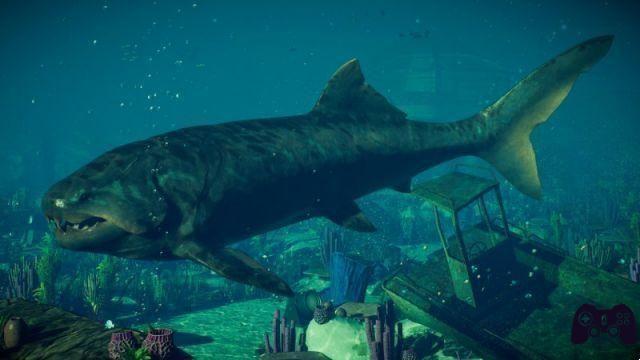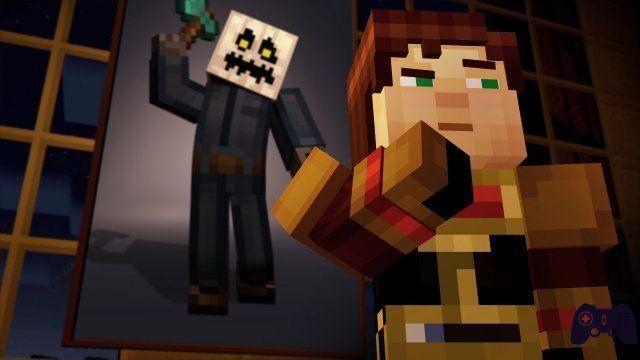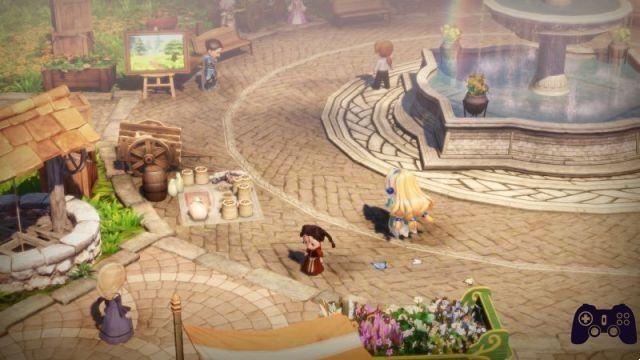behind the name deck 13 There are the German developers of controversial titles, mostly belonging to the so-called AA category, such as Lords of the Fallen and The Surge: discreet video games, which some have appreciated, recognizing their obvious edges. In the Frankfurt offices they attempted a qualitative leap with Atlas Fallen, an ambitious title that looks at the most famous triple A titles without necessarily wanting to reach them.
Deck13's new effort exists in a limbo that reminds us of cult titles like Darksiders and Kingdoms of Amalur, and perhaps that is precisely why the hours spent in the game's desert world convinced us less than we expected. In our Fallen Atlas Review We explain why this work could deserve a chance, perhaps at a discounted price.
Exploring Atlas

We specifically mention Darksiders and Kingdoms of Amalur because Atlas Fallen seems like the child that the two action RPGs could have had if their respective developers had not gone bankrupt in a parallel universe: from the title Vigil Games the guys from Deck13 borrowed the dynamic metroidvania, from Big Huge Games, however, features a third-person role-playing game, and both of the art direction halfway between realistic and cartoonish, with a notable exaggeration in proportions and combat animations.
Il world from Atlas Fallen, in itself, is fascinating: a planet in the process of desertification, on which stands the disturbing figure of the god Thelos, who has reduced it to this state by absorbing its vital energy. The society has been divided in two; There are the nobles, who live in habitable cities like Lithesta, and then there are the nameless, the worthless slaves and mercenaries who barely survive in the outposts scattered across the vast desert.
Our alter ego, which we will create with a discreet editor at the beginning of the adventure, is a Nameless One. His destiny changes drastically with the discovery of a mysterious glove which imprisons a talkative spirit, but without memory of the past and why it ended up in that thing. Evidently the glove grants us superhuman powers that could break the yoke of Thelos and his cultists and that, above all, allow us to fight on equal terms against the specters that lurk in the desert, monstrous and terrible creatures to which we are mysteriously linked by a double Thread: the monsters guard the vital essences that allow the glove to grow and strengthen, and us with it.
The beginning of the story is banal but intriguing, however it falls apart in a very short time, to the point of becoming a mere pretext for exploration and combat. The secondary characters with whom we will interact in the different macro-areas into which the world of Atlas is divided are anything but memorable: the script It barely characterizes them, often bordering on the most obvious possible dialogues. The comings and goings can be counted on one hand and, in the end, the only reason you continue in the main campaign is to unlock the subsequent objectives and, with them, the new spaces to explore.

also the side missions, marked with blue or green indicators, are numerous, but nothing original: in the end it is about searching for some unknown character, fighting enemies or finding objects, and so far there would be nothing bad, if it were not like that. due to the fact that they contribute little or nothing to the narrative and imagery of the game. There world building It is thus entrusted to the "environmental narrative" so loved by the soulslike or the latest Zelda games, but the decomposed ruins that timidly emerge among the sand dunes, the bridges suspended in the void and the stone arches that led to ancient fortresses They don't add anything to the narrative: they simply make a show and they succeed because Atlas Fallen's panoramas are tremendously successful.
Thanks to a satisfying visual horizon and the irregular geometry of the devastated world of Atlas, the maps guarantee a good variety in artistic terms: we go from limitless deserts, spotted only occasionally by patches of vegetation, to mountains suspended in the sky that branch out in all directions, passing through unbalanced underground cities that sink into precipices into the void.

Exploring Atlas is fun thanks to mobility which is purchased immediately together with the glove, but in the long run one realizes that it is a repetitive activity and an end in itself, also worn out by small but frequent instabilities in the frame rate - even in Performance mode - and by the scarcity of content: artifacts to resell, statues to destroy and timed challenges to complete, chests to open to obtain tributes to spend or Essence Stones to place in the glove. The layout of the collectibles is generally clever, challenging the player to use intuition in combination with the glove's powers of perception to find the chests and solve the little platforming puzzles that will possibly allow you to reach them.
The problem, however, lies precisely in the "metroidvania" characteristics linked to the gauntlet powers. In the first moments of the adventure you learn the air boost - a kind of running in the air - and the mining power, which allows you to dig up chests and structures, after which you pretty much only use them for most of the game. These skills are enhanced throughout the campaign, unlocking the possibility of performing up to three consecutive aerial jumps or unearthing larger and heavier structures, but the gameplay remains unchanged and what was done in the first hour of play continues. be done for everyone else fifteen hours about which are used to reach the end credits.
The Gauntlet and the Impetus

Virtually the entire Atlas Fallen revolves around the gauntlet and its powers: even the main campaign occasionally pauses until Fragments which serve to perfect the skills conferred by the glove, so that you can reach areas that were previously closed to you. Sometimes you just need to find the NPC or chest containing the current fragment, sometimes you have to defeat a boss, and in any case you need to draw on the powers of the already unlocked gauntlet to reach the goal.
Once you learn the double jump, the slipped on the sand and the double or triple aerial boost, navigating the world of Atlas Fallen becomes very satisfying: the character responds precisely to actions and moves with agility, allowing him to cross open spaces in a few seconds, resorting to acrobatics that , with a little creativity, will allow you to overcome most obstacles. Alternatively you can always resort to anvil discovered and unearthed, which are used to rest, upgrade the glove and character, or quickly travel from one to the other.

The gauntlet also unlocks a number of combat-related abilities that add to the Dodge, usable at any time, even repeatedly. Now is a good time to emphasize that Atlas Fallen is similar to the action RPGs mentioned above also from this point of view: the combat system is much more chaotic and approximate than the soulslikes that are so fashionable today or the titles focused on struggle. This is not necessarily a flaw, because Deck13 wanted to base the game on discovery and exploration, leaving the fight an important but marginal space, and this is demonstrated by the small number of enemies on the maps: sometimes you move for whole minutes without detecting a single one.
Precisely for this reason merits must be recognized in the design of the combat system and its functions, which fit together like Russian dolls. The first thing you should know is that another defensive ability is added to the dodge, called sand skin, which represents the most technical element of the game: it is a kind of parade that protects the character for a brief moment and requires a few moments of recharging before being used again.

The concept is simple: repeatedly parrying enemy attacks - up to three times in the case of bosses - results in a freezing effect that paralyzes the target, giving you a few seconds to attack them freely. More complicated to put into practice this game dynamic, which forces the player to memorize enemy animations and their attack patterns: each shot is preceded by a red flash that warns us of the imminent danger, but which does not correspond precisely to the moment in which we must activate the stop. We must learn to recognize the enemy to know when the attack will arrive after the red flash, to be able to stop it precisely, without suffering damage. load times which would leave us defenseless against a repeated assault. The best players will be able to get rid of enemies without even being touched, a very satisfying feeling.
Alternatively, you die and restart at the nearest checkpoint or at the start of the battle if you're fighting a boss. They treat us mostly withIdol, a kind of potion that is recharged by attacking enemies and that we can associate with a series of customizable temporary bonuses. At its core, the combat system rewards an aggressive approach in an interesting way.

This is demonstrated in particular by the entire mechanism ofThe crescents, a gauge placed below the life energy gauge: it is divided into three notches and is charged by fighting enemies. The more the momentum increases, the more damage we deal but also the more damage we take. It is what is called high risk high reward, that is, the greater the risks we take, the greater the rewards will be, but Momentum is also closely linked with a couple of additional features that represent the more RPG aspects of Atlas Fallen. In fact, we can customize the Momentum indicator with the essence stones, special abilities of an interactive or passive nature that are inserted into the slots corresponding to the three notches and that come into operation when the corresponding Impetus level is reached.
In practice, the most powerful abilities and bonuses are only available after reaching a certain level of risk in combat, and it is up to the player to distribute the Stones based on the synergies they prefer. Knowing that at the third level of Impetence you start to take significant damage, it would make sense to choose essence stones that reduce it, or focus entirely on aggression and stones that improve the weapons wielded or that grant additional bonuses to the player and his companion. : we remind you that Atlas Fallen is playable in cooperative, although unfortunately it was not possible to test this mode before launch.
The Joys and Sorrows of Atlas Fallen Combat

As you progress through the campaign, you unlock up to three different weapons, but a maximum of two can be equipped at the same time as primary and secondary: alternating the keys associated with each one, simple combos are chained on the ground or in the air that, combined with attacks and dodges, guarantee good dynamism Of action. Each weapon has a specific range and power, so once you unlock them default settings It is possible to save up to three combinations of weapons and Stones to exchange on the fly when you are not fighting, without having to go through the cumbersome specific screens each time.
More importantly, your choice of weapons not only affects the combat rhythm. The Desert Cleaver, for example, is slow but devastating, while the Sand Whip is less damaging but allows you to keep your distance, and the Dust Fist allows you to charge up very powerful attacks. And above all, the final move, which can be performed when at least one level of momentum has been charged, has a double strategic function: it not only serves to inflict a lot of damage, but also to discharge the entire momentum gauge in case you need to step back in a time of difficulty.

The guys at Deck13 have studied the competition well, staging a visually spectacular combat system that draws heavily from the best video games in the sector: there is even a bit of Monster Hunter in Atlas Fallen, since you can aim at the different parts of the body of giant enemies to destroy them and improve loot, specifically by increasing the amount of essence powder in rewards. The latter is a currency that you should learn to micromanage, because it can be used for a little bit of everything: upgrading Essence Stones, unlocking Momentum gauge slots, and upgrading armor.
The protections, customizable in colors and with cosmetic decorations, are complete, as if they were costumes or masks, and guarantee various bonuses to the different parameters of our Senzanome. Each armor is characterized by a different inclination that is reflected in its aesthetics, and by a series of additional bonuses that are activated by inserting the appropriate Essence Stones into the Momentum gauge. Upgrading armor with Essence Powders increases the character's overall level and gains them. Services, points will be distributed across a simple grid of talents that affect mobility, combat, and overall gameplay.

If we have already talked about the incompleteness of the exploration, especially in relation to one fiction that never takes off, it is worth commenting on the combat system that we have described in the most detailed way possible just to make you understand the goodness of the ideas contained in a code that seemed really dirty to us. The issues we reported months ago in our Atlas Fallen preview persist in the version we tested for review, although Deck13 promised to release some corrective updates starting on launch day.
Between enemies that suddenly disappear and reappear in other places, an imprecise and confusing camera especially when you start taking advantage of aerial mobility, pop-ins on the horizon, textures that fry and repeated system failures. PlayStation 5 When we tried the game, our experience wasn't exactly the best. And these are problems that updates could certainly cushion or resolve, but it is difficult, if not impossible, for the German developer to intervene in the root of the approach of the collisions: Half the time it feels like you're punching air because there's no feedback on shots and it's almost impossible to accurately judge distances in 3D space, which often ruins the use of parrying or dodging, with shots either missing or hitting. completely randomly.

It's really a shame that Atlas Fallen slips on the proverbial banana peel, launching - it must be said - so many interesting dynamics neglecting the game basics, that is, that exploration that would like to be the driving force of the adventure but that loses stimuli with each passing hour, and the combat system that combines endless convincing ideas with fallacious and confusing programming. We could conclude with a banality: too much is too much and perhaps the guys from Frankfurt should have concentrated on the basics before developing it, but the reality of the facts is that they managed to invent a suggestive and powerful images which could be completely in vain: at the end of the day, we can't help but hope for a better sequel.
Conclusions
Tested version PlayStation 5 Price 59,99 € Holygamerz.com 6.5 Readers (24) 7.0 your voteAtlas Fallen is an action RPG full of ideas: some are not very original, others are really clever, but overall Deck13's title barely stands the test of time. The narrative does not encourage further exploration of a world lacking diversified objectives, in which the enormous potential of the combat system succumbs to crude and angular programming. There is certainly something good about Atlas Fallen, starting with the notable art direction not to mention the cooperative mode that probably adds some value to the experience, but ultimately we can't help but recommend this title only to fans of the genre or discounters.
PRO
- Fascinating and fun settings to explore.
- Very interesting intertwined dynamics and functionality.
- Images have potential.
AGAINST
- Forgettable narrative
- The combat system is imprecise, perhaps too ambitious.
- Little variety in content, objectives and puzzles




